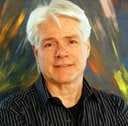Starting this blog was easy. Coming up with a name was not. There are so many people out there using the Internet that I'm continually astounded about how crowded the name-space has become. I could use my own name surprisingly, but that was intimidating. Not sure I have enough to say to want my real name attached to it. But we'll see as I go whether I can come up with a few nuggets to make reading me worthwhile. At any rate I've begun the process . . .
I share my current favorite quote:
"Be yourself; everyone else is already taken." - Oscar Wilde (1854-1900)
- end of day one -
Friday, September 19, 2008
The term "Fractal"

The term 'fractal' was introduced by Benoît B. Mandelbrot, but many of the subject's concepts - notably fractal dimension - have a lengthy prehistory. Mandelbrot's contribution to the subject have been many, but the most important was the realization that there was a subject.
[The Colours of Infinity - The Beauty and Power of Fractals; Contributors: Sir Arthur C Clark, et al; Clear Books]
//image is a classic Mendelbrote set - Wikipedia//
1. what do a fractals look like?
2. where can fractals be found?
3. what use are fractals?
We'll pick away at this over some of the coming posts.
More on Benoît B. Mandelbrot from Wikipedia:
Mandelbrot
The Seven-Circuit Labyrinth

A classical seven-circuit labyrinth:
Frequently found around the world. Basis of the Lindbacke Labyrinth in Nykoping, Sweden; The "Man in the Maze" of the O'Odham indians of the American Southwest; and the Glastonbury Tor Labyrinth in Southwester England.
[Labyrinths - Ancient Myths & Modern Uses; Sig Lonegren; Sterling books]
Subscribe to:
Posts (Atom)

